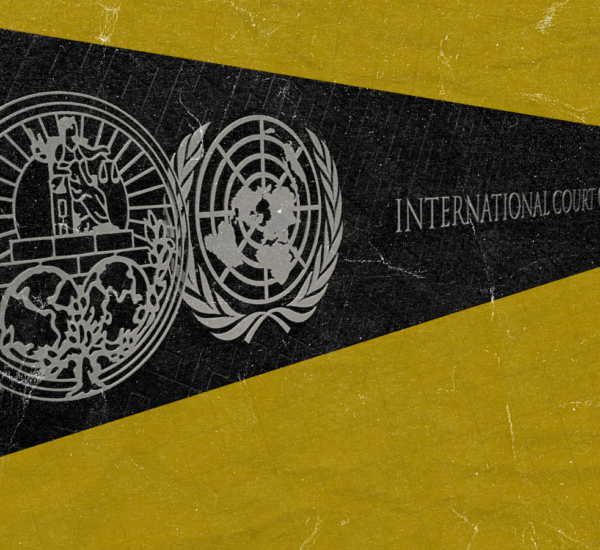
Stuti Rai

Harini Raghupathy
This article was first published by Article 14 on 4th August 2022 and can be accessed here.
New Delhi: In upholding the validity of India’s money laundering law, the Supreme Court on 27 July 2022, created a new normal in the country’s justice system, overturning the basic principles of criminal law, deferring to Parliament and the government and subverting its own powers of independent judicial review.
A Supreme Court bench of Justices A M Khanwilkar, Dinesh Maheshwari and C T Ravikumar effectively recast its power of judicial review as judicial deference; failed its own process of judicial review; did not seriously test the law against the Constitution; and, in not investigating the government’s claims that money laundering was akin to terrorism, handed over the Enforcement Directorate a slew of extraordinary powers that give it more authority to strike down individual liberties than any police force.
In Vijay Madanlal vs Union of India, the Supreme Court, upheld the constitutional validity of the Prevention of Money-Laundering Act (PMLA) 2002 (PMLA), which accepts and reiterates the State’s stance that since money laundering allegedly threatens India’s sovereignty, the PMLA and its extraordinary procedures is necessary.
The lack of investigation into such claims indicates that a divergence from the norm, or exceptionalism, in criminal laws and processes, is becoming the norm; and that Parliament has to merely consider an act a grave threat to legislate and operationalise harsh and extraordinary procedures.
Our analysis shows that the Supreme Court did not seriously test the law against standards of constitutionality, an essential component of the power of judicial review, which requires the Court to undertake an independent analysis of the legitimacy of State action, including legislations, against constitutional standards of reasonableness and proportionality.
The Court failed to follow its own process of judicial review as exercised in previous judgments (here and here), since its starting point is to not question, in its words, the “legislative wisdom” behind the law.
The result has been that the enforcing agency, the Enforcement Directorate (ED) now has unfettered powers in many respects, which upturn the basis of Indian criminal law: it can make an arrest without wholly letting the accused know what the accusation might be; it is up to the accused to prove innocence instead of the investigating agency; it allows bail only if accused proves their innocence and can convince the court they are not likely to commit an offence when out on bail.
The leeway given by the Supreme Court to the State comes despite a conviction rate of 0.5%, indicating that there is basis to widespread criticism (here and here) that the PMLA is being misused to make the process of the law the punishment.
The Norm & The Exception
The PMLA deviates from normal criminal processes and privileges the deviation in case of conflict. The State’s justification for these deviations under the PMLA is that the law is necessary to protect India’s “integrity and sovereignty” and is in line with international efforts to prevent money laundering.
In India, the legal scaffolding of substantive and procedural criminal law is contained in three general laws: the Indian Penal Code, 1860 (IPC), the Code of Criminal Procedure, 1973 (CrPC) and the Indian Evidence Act, 1860 (IEA). These laws build on widely accepted precepts of justice and fairness (here and here) and strike a balance between State might and individual rights.
The presumption of innocence, the right against self-incrimination, the right of the accused to be informed of the charges and evidence against them, and magisterial oversight on police powers are some tenets that act as checks on the State, ensure the sanctity of the legal process and protect the accused from abuse.
At the same time, Parliament is also empowered to pass special laws modifying the substantive and procedural aspects of criminal law by claiming the extraordinary or exceptional nature of certain offences.
The State’s fundamental premise is that general criminal laws are inadequate to address and investigate certain crimes, such as those related to terrorism. For example, anti-terror legislation, including the Unlawful Activities Prevention Act (UAPA) 1967 reverse the burden of proof in favour of the State and dilutes protections for those accused.
Another example is the Terrorism and Disruptions of Activities Prevention Act (TADA) 1987, which makes confessions made to a police officer legal, which is otherwise prohibited under the IEA.
The “special” nature of these laws often lies in diluted protections for the accused, harsher penalties, and, importantly, in aggregating to the State police powers that would otherwise be suspect.
The PMLA, a special legislation, was enacted to prevent and punish the offence of money-laundering, defined as any activity relating to proceeds derived from the commission of offences listed under the Act.
Exceptions & Exceptionally Broad Procedures
In upholding the broad powers of the PMLA, the Supreme Court has allowed the ED to do away with the requirement of a first information report (FIR), the starting point of any police investigation.
In doing so, the Court has allowed the ED to begin an investigation without revealing to the accused what the investigation is about. The enforcement case information report (ECIR)—the equivalent of an FIR, it is an internal document mandated by the ED manual—is prepared by the ED to start investigations, but is not provided to the individual under investigation or whose assets might be under investigation.
The Court said that, unlike an FIR, the ECIR is not a statutory document and hence the ED cannot be forced to provide a copy of the ECIR to the accused. The judgment skipped any analysis of this divergence, not involving itself issues of natural justice or constitutional fair-trial guarantees that allow accused to be told of the charges against them.
Withholding the ECIR creates a situation where the accused could well be unaware of the exact allegations against them. Even though the PMLA requires the grounds of arrest to be communicated to the individual at the time of arrest, there is no clarity on the nature of such communication.
Certain basic information—including the crime alleged and information regarding the proceeds of crime—in the ECIR need not be provided to the individual at the time of the arrest. This means those arrested are left without information to effectively defend themselves.
However, the Court argued that the PMLA has certain ‘inbuilt safeguards’ that protect the accused against arbitrary actions of the ED, such as, an arrest can be made only if the ED has reasons—to be given in writing—that the accused is guilty.
None of the safeguards cure the fundamental defects of keeping an individual in the dark about their status as a suspect or a witness until arrest, and not requiring the ED to disclose the allegations against someone being arrested.
Another divergence from the norm is the admissibility of confessions. One of the constitutional guarantees in India’s criminal process is the right against self-incrimination, which means people cannot be compelled to be a witness against themselves.
However, the power of the ED to record and use statements of accused against them has been upheld on the grounds that neither is the ED a police authority nor is the involved individual an accused—yet. The ED can conduct inquiries, investigate, summon and arrest individuals, without being bound by any of the rules that regulate the police.
The Supreme Court has often observed that the “bail-not-jail” rule is followed in its lack of observance. Under the PMLA, the rule is legislatively perverted by requiring that accused prove their innocence to secure bail. Generally, it is for the State to prove the accused’s guilt through the trial process, and bail is granted if a prima facie case of guilt is not made out.
The PMLA puts the entire burden on the accused to prove innocence, from the moment of arrest. The Court subverted this fundamental principle on the ground of “the gravity of the offence”—a justification that the State provided and the Court accepted without serious interrogation.
Normalising The Exception
The Supreme Court has deemed it permissible to use “exceptional” procedures to combat the “scourge” of money-laundering because it apparently threatens the “economic stability, sovereignty and integrity of the nation”.
The exceptional nature of the PMLA is, however, itself suspect because of its ever-expanding reach in terms of what can be considered an offending act. According to the PMLA and the manner in which it is defined, an important constitutive element of money-laundering is the “proceeds of crime”.
Essentially, proceeds of crime refer to movable or immovable property, directly or indirectly derived from that crime. This definition, with the Court’s approval, means that any property bought with proceeds of crime will be—forever—regarded as the proceeds of crime.
In addition, if such property is later bought by a third-party in good faith, the Act presumes that the property was indirectly derived from the proceeds of crime and hence the burden is now on the third-party to prove otherwise.
For example: A buys a painting from the proceeds of crime listed as a “scheduled offence”; he sells the property to B, who buys the property in good faith. The property is presumed to be derived indirectly from the proceeds of crime and hence it is upon B to rebut this presumption.
The schedule of offences under the PMLA has been expanded over the years, to even include activities such as piracy under the Copyright Act and discharge of environmental pollutants, which are not offences that threaten India’s sovereignty.
This is in contrast to the original intent of the law to combat financing of terrorism, organised crime and narcotics trade. The PMLA thus extends its exceptionalism to an overly diverse category of acts.
Supreme Court Nobbles Its Own Powers Of Judicial Review
In the PMLA case, the Supreme Court was called upon to exercise its powers of judicial review and hold the law to constitutional scrutiny.
The powers of judicial review allow courts to check State actions and safeguard the protections provided by the Constitution. Instead of scrutinising the validity of the challenged action, the Court largely deferred to Parliamentary and executive wisdom.
The Court gave its stamp of approval, as we said, to arbitrary and nearly completely unregulated powers of the ED from the procedure of registering an ECIR to the procedure of arrest.
The potential for abuse and the implications for corresponding lack of procedural protections for the accused are not issues the Court engaged with, even as it expected the accused to prove innocence to even secure bail without providing access to legal material.
With regard to bail conditions, the Supreme Court merely accepted the State’s argument that the conditions were justified on account of the Court’s precedent in the 1994 Kartar Singh vs State of Punjab.
The Supreme Court did not examine whether the application of the principle laid down in Kartar Singh was justified in the context of the PMLA and whether such protections were necessary, proportionate or reasonable within a constitutional analysis.
The government’s considerable insistence that the offence of money-laundering is “grave”, was used as the single most important justification to hold the PMLA as constitutionally justified.
The Supreme Court provided no reasons to accept the State’s arguments, reject the petitioner’s arguments or even support its own conclusions. Instead of interrogating the validity of the State’s arguments and then accepting or rejecting them, the Court adopted them largely without question.
The powers of judicial review are meant to act as a check against legislative and executive overreach or breach of the Constitution. The Court appears to have miscast its powers as “second guessing” legislative intent. This pronouncement now indicates that as long as Parliament has designated any offence as a serious threat, India’s constitutional courts of India will not interfere.
The Supreme Court did not attempt to engage in the most fundamental tests for assessing the validity of legislation: is it necessary; is it a constitutionally proportionate response to a perceived threat; or if it even reasonably related to the objective.
Not only did the Supreme Court adopt the State’s arguments without question, it also did not refer to any of the petitioner’s arguments in its analysis. For instance, the petitioner made extensive arguments about the powers of the ED being akin to police powers.
The Supreme Court applied none of available legal tests, including the argument that the power to file a charge sheet indicates that an investigating agency fulfills the definition of ‘police’, and simply stated that the PMLA is not a penal statute, even though it provides for imprisonment up to 10 years.
Similarly, the petitioners’ arguments around the importance of providing materials, such as the ECIR, to the accused went unacknowledged by the Court.
India’s courts are expected to be, as many experts have noted (here, here and here) the sentinel on the guard for human rights, even in the face of majoritarian approval for State encroachments into individual rights and liberties.
With the PMLA judgment, that view has been turned on its head.
Stuti Rai and Harini Raghupathy are Litigation Associates at Project 39A.





